|
|
|
|
|---|---|
The Dialist bore a resemblance to another DX publication of the day, the popular Radio Index, commonly referred to as RADEX. Slightly larger in dimensions than RADEX, each Dialist after the first pictured a radio personality on the cover (a photo of club president and Dialist editor Irving R. Potts adorned the first issue), as well as numerous pictures of radio stars, and lists of broadcast band stations arranged by frequency and call letters, and various other lists. Beyond that, the magazine contained all manner of chatty articles and DX news, usually in fairly brief presentations. Originally devoted exclusively to the broadcast band–the heart and soul of the club–it soon branched out to shortwave as well. There was also some advertising, from receiver manufacturers E. H. Scott, McMurdo Silver, and Midwest; plus National Union Radio Tubes; several radio sales, service and consulting firms; and Pavey Envelope & Tag Co. of Newark. |
|
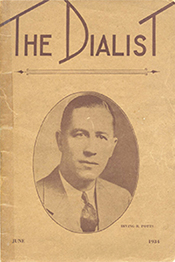 |
This first issue was dedicated to The Newark Evening News. It contained pictures of several officials of the paper, together with a roster of club officials, several of whom contributed articles. There was a club history by Vice-President Douglas P. Laidlaw, along with DX reminiscences, reports on two recent club meetings, explanations of the Courtesy Programs Committee and the Interference Committee, many mentions of DX catches, articles on antennas and QSLing techniques, and one on shortwave. There were notes on the DX progress of various members, a list of those who had achieved “Super-Ace” status (500 different calls heard and verified), and a report on the doings of NNRC members in Maryland. Charlotte Geer, author of the newspaper’s “Broadcasts Winnowed” column, and the club’s first vice president at its formation, imagined a radio scene in the home. |
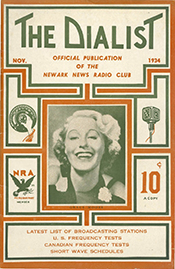 |
This issue contained much more DX news and station news than the first. An article explained the various DX certificates issued by the club, and there was a list of the times and days of station frequency tests. Information on radio programming was contained in “Flash Lines” and “What’s on the Air,” and there was a commentary on reception reports as seen from a station manager’s point of view. Well-known engineer John V. L. Hogan contributed an article on the future of radio (and TV). Shortwave received a good deal of coverage in “High Frequency,” “Short Wave Notes” and “Tuning the Short Waves,” and there was a two-page list of world shortwave stations. There was also a long list of upcoming courtesy programs, which the NNRC was adept at organizing. |
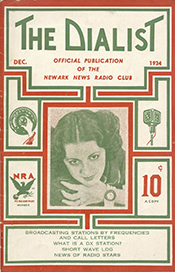 |
The volume of DX news and station news was expanding. There was a commentary on transatlantic broadcast band reception, also on radio listening in Canada, and overall there was a greater focus on DX (one article explored the definition of a DX station). In addition to the usual station lists, there were notes on a few Japanese broadcast band stations, and brief descriptions of the ham activities of several members. The list of shortwave stations was now attributed to Capt. Horace L. Hall, a well-known figure in the DX press of the day. A list of 16 “NNRC listening posts” was offered, but without explanation as to just what this designation represented. |
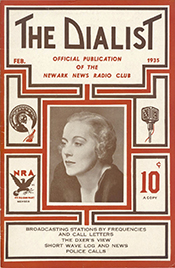 |
Broadcast band station and program news (“Studio Gossip,” “Micro Chats”), and broadcast band DX (“The DXers’ Corner,” “With the Air Raiders”), continued to receive good coverage. There was the usual list of “Principal Short Wave Stations of the World,” now attributed to the IDA (International DXers Alliance), but this issue offered comparatively little shortwave coverage. A response was made to the station manager comments in the November issue, and there was an article about technical information that should be included in reception reports. Ham coverage expanded slightly (“NNRC Ham Notes”), and for lighter fare there was “Mike Fright.” The names of 29 new NNRC members was presented, along with personal notes about a few NNRCers, and “Interesting Radio Calls,” which appeared in most issues. This issue also carried lists of network (“chain”) stations and police radio stations. |
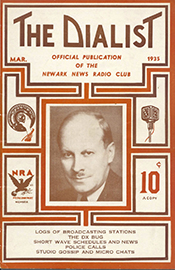 |
Reports from broadcast band DXers included those of well-known names like Carleton Lord, Earl Roberts and Carl Forestieri. Once again the focus was on the broadcast band, with an article titled “The DX Bug” and features on KSL in Salt Lake City and WOR in New York. “Circling the Globe” contained brief notes on broadcasting in various countries, and “Short Wave Notes” returned. A short list of “NNRC DX Tips Broadcasts” presented what appears to have been DX programs of one kind or another, all on the broadcast band and most in the wee hours. There was a brief box reminder of the availability of NNRC letterhead and reporting forms. |
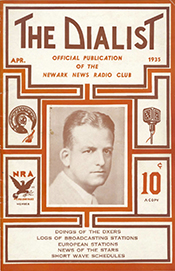 |
The Dialist continued in the usual format. A brief Spanish-language form text was offered for use on return postcard reports, but comprehensive foreign-language reporting forms were still in the future. The month’s lists included one of European broadcast band stations, which was something new. There was another feature on WOR. The station’s chief engineer, Jack R. Poppele, whose picture was on the front cover, would be an important figure in the NNRC for decades (he would become head of the VOA in 1953). Although advertising had always been a relatively small part of the bulletin, in this issue there was but one ad, reflecting the Dialist’s losing competition for advertising with its parent newspaper, which contributed to the magazine’s demise. |